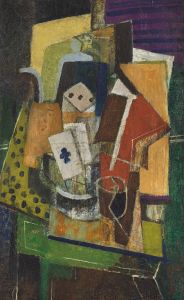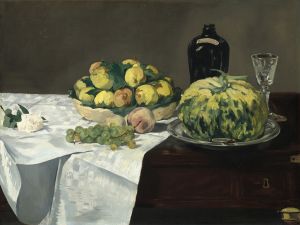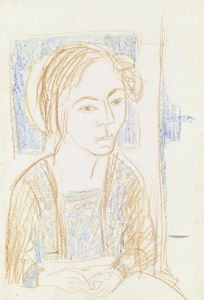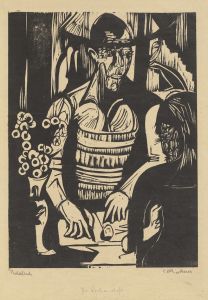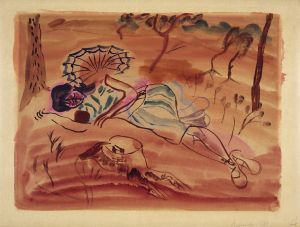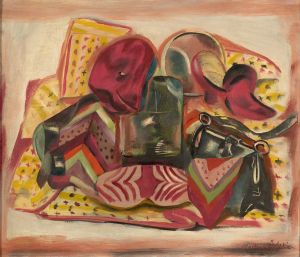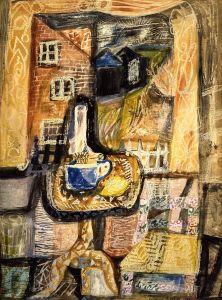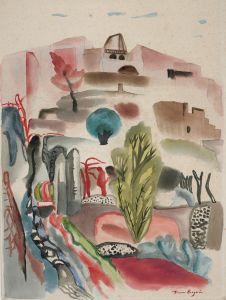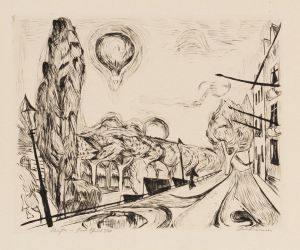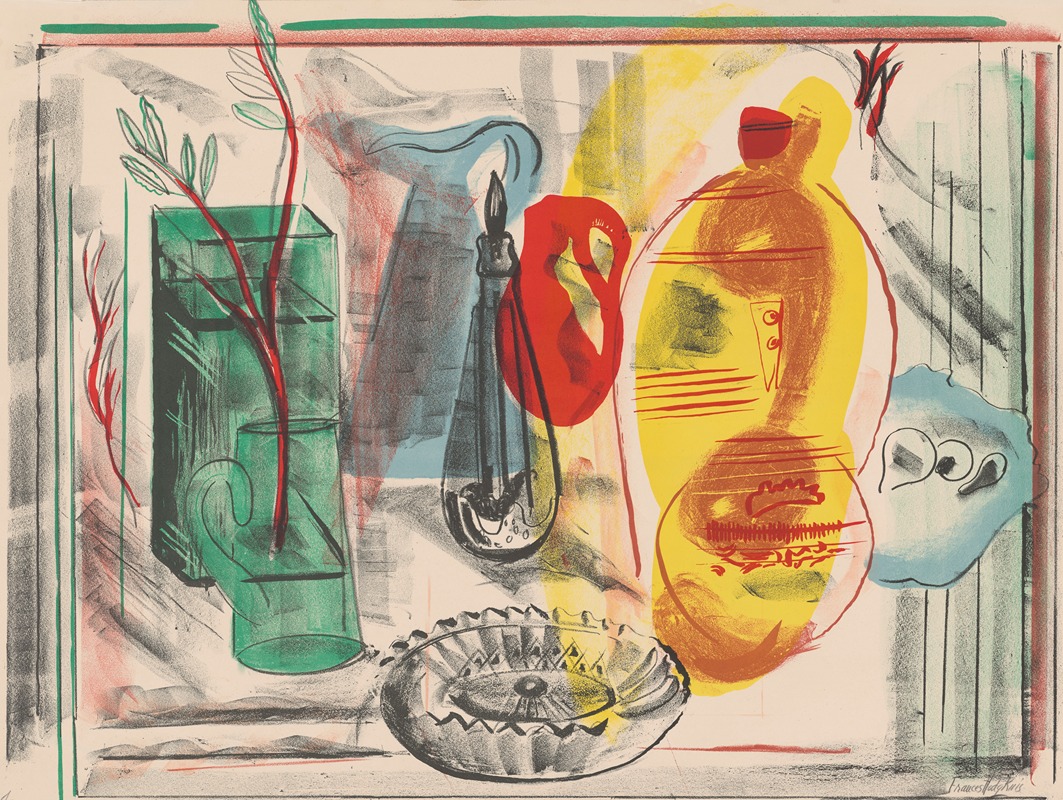
Arrangement of jugs
A hand-painted replica of Frances Hodgkins’s masterpiece Arrangement of jugs, meticulously crafted by professional artists to capture the true essence of the original. Each piece is created with museum-quality canvas and rare mineral pigments, carefully painted by experienced artists with delicate brushstrokes and rich, layered colors to perfectly recreate the texture of the original artwork. Unlike machine-printed reproductions, this hand-painted version brings the painting to life, infused with the artist’s emotions and skill in every stroke. Whether for personal collection or home decoration, it instantly elevates the artistic atmosphere of any space.
Frances Hodgkins (1869–1947) was a prominent New Zealand painter known for her contributions to modernist art. Her work "Arrangement of Jugs" is an exemplary piece that showcases her unique approach to still life painting, a genre she frequently explored throughout her career. Hodgkins was renowned for her ability to infuse everyday objects with a sense of vitality and emotion, and "Arrangement of Jugs" is no exception.
Born in Dunedin, New Zealand, Hodgkins moved to Europe in the early 20th century, where she became an integral part of the modernist movement. Her exposure to various European art styles, including Impressionism and Post-Impressionism, significantly influenced her artistic development. By the time she painted "Arrangement of Jugs," Hodgkins had already established herself as a skilled artist with a distinct voice.
"Arrangement of Jugs" is a still life painting that reflects Hodgkins' innovative use of color, form, and composition. The painting features a collection of jugs, arranged in a seemingly casual yet deliberate manner. Hodgkins' choice of subject matter—a simple domestic scene—belies the complexity of her technique and the depth of her artistic vision. The jugs are depicted with a fluidity and dynamism that suggest movement, a hallmark of Hodgkins' style.
One of the most striking aspects of "Arrangement of Jugs" is Hodgkins' use of color. She employs a vibrant palette, with bold hues that draw the viewer's eye across the canvas. Her application of color is both expressive and harmonious, creating a sense of balance and rhythm within the composition. This approach to color is indicative of Hodgkins' broader artistic philosophy, which emphasized the emotional and expressive potential of color in painting.
Hodgkins' treatment of form in "Arrangement of Jugs" is equally noteworthy. She often distorted and abstracted the shapes of objects in her still lifes, challenging traditional notions of representation. In this painting, the jugs are rendered with a fluidity that blurs the line between abstraction and realism. This technique allows Hodgkins to explore the interplay between form and space, inviting viewers to engage with the painting on a deeper, more intuitive level.
The composition of "Arrangement of Jugs" is carefully considered, with each element of the painting contributing to its overall effect. Hodgkins' arrangement of the jugs creates a sense of movement and flow, guiding the viewer's gaze through the painting. This dynamic composition reflects Hodgkins' interest in capturing the essence of her subjects, rather than merely depicting their outward appearance.
"Arrangement of Jugs" exemplifies Frances Hodgkins' innovative approach to still life painting and her broader contributions to modernist art. Her ability to transform everyday objects into vibrant, expressive compositions has earned her a lasting place in the history of art. Through her work, Hodgkins challenged conventional artistic norms and paved the way for future generations of artists to explore new possibilities in painting.
Today, Frances Hodgkins is celebrated as one of New Zealand's most important artists, and her work continues to be studied and admired by art enthusiasts and scholars around the world. "Arrangement of Jugs" remains a testament to her skill, creativity, and enduring influence on the art world.






